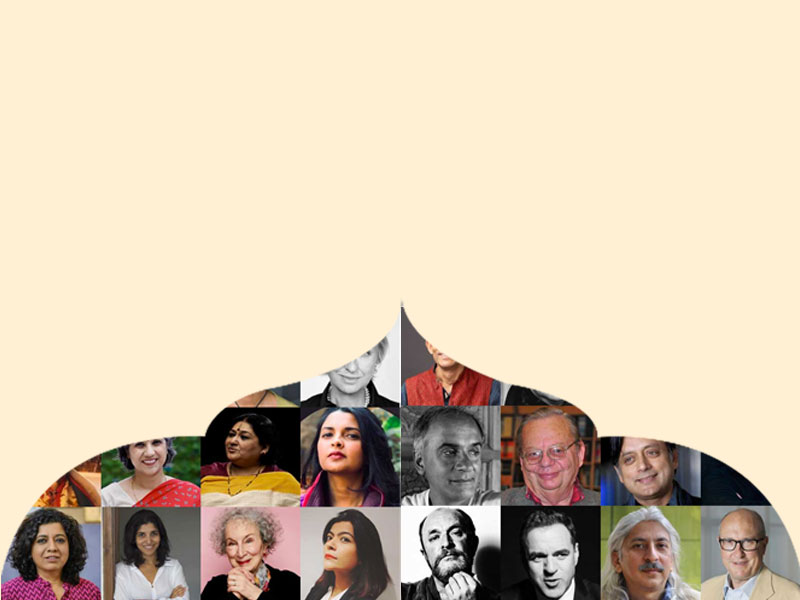Tune in for narratives critical to our times. Listen, ask and seek answers.
Watch NowWhat Lies Beneath – Listening to Robert Macfarlane On JLF Brave New World
Robert Macfarlane had me at “unburial!†When he used the word early on in his utterly fascinating conversation with writer, historian & Jaipur Literature Festival Co-director William Dalrymple on Wednesday (April 29th) on “Brave New World†- JLF's spanking new online series designed to keep our lockdown full of intellectual jostling - I knew I was hooked till the end of the session. That, and the fact, like my father, another very intellectually-endowed man I know, Macfarlane too is reading Camus' The Plague and looking at the terrifying parallels between a sealed-off Oran and modern day.
Macfarlane - Cambridge Fellow, intrepid traveller, nature-expert and writer -equates the Covid-19 virus to an under-the-surface scourge, “repressed systemsâ€, rising from the depths of the Earth to “overwhelm and destroy surface systems†and play out a “virus stormâ€. It is indeed a chilling metaphor, one which highlights his own obsession with what lies beneath.
The darkness of the buried which he attempts to uncover in his recent ground-breaking work – Underland – A Deep Time Journey (a spectacular success across the globe, Dalrymple affirmed as the conversation began) on unravelling the “underland†that satisfies, according to Macfarlane, an ancient and almost visceral human urge “to go into darkness†in order to see better than in light. It is in this context that he brings in the idea of “unburial†- to go deep into the heart of darkness – which is what, he thinks, prompted humankind to stencil handprints in red on labyrinthine galleries in the caves of Spain's El Castillo, recently dated by new Uranium dating techniques to 64000 years ago, or closer home, as Dalrymple pointed out during the session, inspired the Stone Age etchings in India's Bhimbetka Caves.
Underland took a long time to be written – almost a decade of research, taking Macfarlane to the Sumerian Epic of Gilgamesh, the Catacombs of Paris with its remains of nearly six million people - an urban 'repurposing' that ironically served as a hideout for the French Resistance, and the Onkalo in modern-day Finland - a deep cavity into the heart of the Earth to house lethal nuclear waste for 100,000 years.
What boggles my mind is that this book about burial and unburial, deep time and journeys into darkness, arose from three extraordinary global events: the Deepwater Horizon disaster in the Gulf of Mexico (the largest oil spill in the history of the petroleum industry), the entrapment of 33 Chilean miners beneath the Atacama desert, and the eruption of Iceland’s Eyjafjallajökull volcano.
All three events were subterranean happenings with an explosion of consequences unfolding on the world above, the Anthropocene one we see over the surface. It makes me think profoundly of what the Earth conceals. I understand when Macfarlane explains that while climbing mountain peaks is a relatively modern practice, its opposite, delving the underland, is as ancient as the human species. Naturally, in the Babylonian Epic of Gilgamesh, the Sumerian hero Enkidu is asked impatiently by Emperor Gilgamesh about news of the dead after his travels in the netherworld – “Did you see my little stillborn children who never knew existence?†he heartbreakingly asks. “I saw them,†is Enkidu's impassive Sphinx-like reply.
As I read more about Underland and its author – I see the core of its ideology - the underland’s impregnability, its resistance to give access is symbolic. Macfarlane makes a very important existential point - for communities across the world, since the dawn of prehistory, the land beneath is where lies memory, grief, death and afterlife – it is here that ancient civilisations stored their art, precious objects and their most loved – the dead. It is from here, the Hall of Hades, that Orpheus tried hard to bring Eurydice, his beloved wife, back, and lost her, because of a moment’s indecision, to its cavernous layers, forever. Interestingly, the ancient Roman counterpart of Hades, the Greek God of the underworld, was Pluto (with the original name Plutus). The Romans revered him as the dispenser of gold, silver and other subterranean substances. Probably, because these “gifts†were mined, something as relevant even now, Pluto became the recognised leader of the physical underworld, which automatically made him master of the “spiritual†underworld and in turn, the god of death, endowing him with immense power. One can only gape at the eternal and fascinating connection between the underworld, its sway over humanity and the goldmines it possesses, both literally and metaphorically.
It is from the buried and the unseen then that a foretelling of the future emerges – which is, according to Macfarlane, a “characteristic dynamic of the underworld†– and a fact that science is now discovering as it unravels truths about ecology, environment and nature from the depths of the Earth.
While you reflect on all this and perhaps go listen to the recording of this session on JLF’s social media channels and I start reading Underland, I will also await the song series which Macfarlane says he is writing on the Epic of Gilgamesh with musician Johnny Flynn as they wait out this lockdown. I am praying too that soon the dark cloud of the pandemic gives way to the sunny skies of Jaipur and I can see and hear both Macfarlane and Flynn and many others in person at the "greatest literary show on Earth!"





Leave a comment